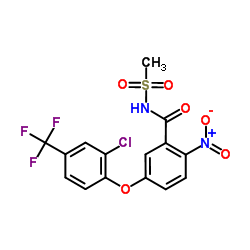Haemocyte apoptosis as a general cellular immune response of the snail, Lymnaea stagnalis, to a toxicant.
Jacqueline Russo, Luc Madec
文献索引:Cell Tissue Res. 328(2) , 431-41, (2007)
全文:HTML全文
摘要
The effects of a xenobiotic on the circulating haemocytes of Lymnaea stagnalis were investigated after short-term (24 h, 96 h) and long-term (504 h) exposure of snails to environmental concentrations. Fomesafen, a pro-oxidant generator led to the activation of the haemocyte apoptotic program by promoting reactive oxygen species (ROS). Cells entering apoptosis underwent a series of events, both on the plasma membrane and in the mitochondria; these events were quantified by flow cytofluorometry. The data showed a loss of mitochondrial transmembrane potential (Deltapsim), which was dose-dependent and time-dependent and related to an increased release of superoxide anions. The phosphatidylserine that was exposed at the outer plasma membrane was not related to the disruption of either ROS or Deltapsim but was strongly correlated with the haemocyte concentration (total haemocyte count). This cascade of apoptotic processes occurred in a dose-independent manner and was not strengthened over time. The increase of circulating haemocytes depended upon the life span of the cells and might have reflected either facilitated cell turn-over or the accompanying presence of haemocytes phagocytosing apoptotic cells.
相关化合物
| 结构式 | 名称/CAS号 | 分子式 | 全部文献 |
|---|---|---|---|
 |
氟磺胺草醚
CAS:72178-02-0 |
C15H10ClF3N2O6S |
|
The effect of protoporphyrinogen oxidase inhibitors on micro...
1995-12-01 [Obes. Res. 3 Suppl 5 , 785S-788S, (1995)] |
|
Occurrence and distribution of sulfonylurea and related herb...
2011-10-01 [Bull. Environ. Contam. Toxicol. 87(4) , 420-5, (2011)] |
|
Experimental hepatic uroporphyria induced by the diphenyl-et...
2003-05-15 [Toxicol. Appl. Pharmacol. 189(1) , 28-38, (2003)] |
|
Effect of a toxicant on phagocytosis pathways in the freshwa...
2008-07-01 [Cell Tissue Res. 333(1) , 147-58, (2008)] |
|
Circadian response of annual weeds in a natural setting to h...
2003-03-01 [Chronobiol. Int. 20(2) , 299-324, (2003)] |